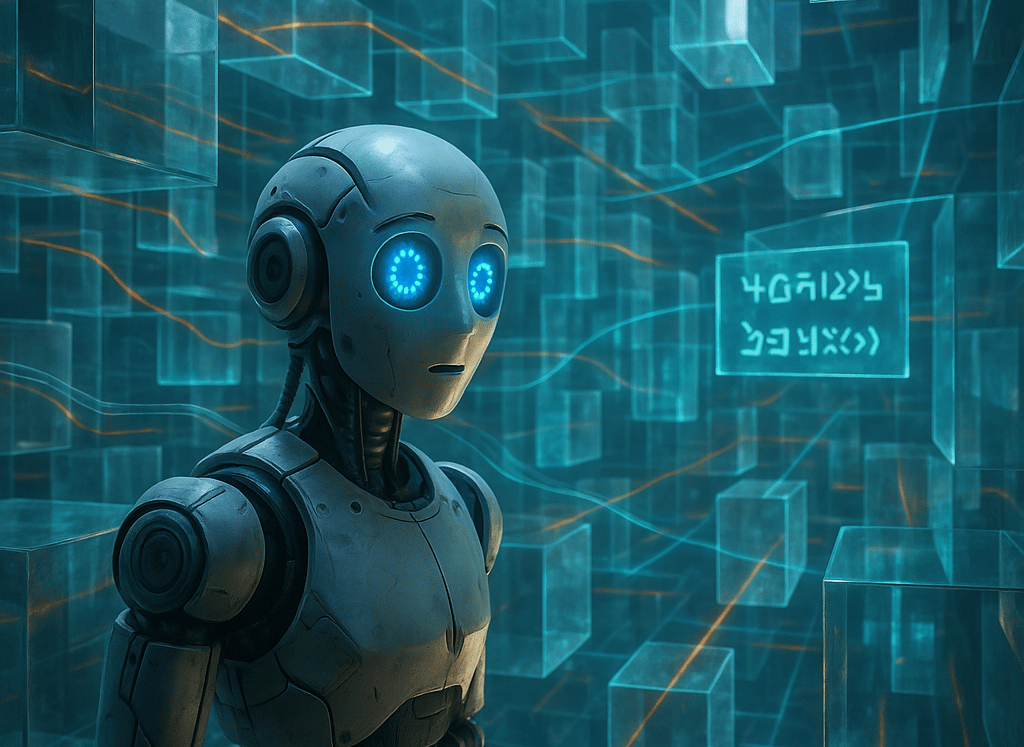Teaching Robots to See and Understand: The Breakthrough in Vision-Language Models
AI vision models learn space via synthetic 3D worlds
AIARTIFICIAL INTELLIGENCETECHNOLOGY
Eric Sanders
6/13/20254 min read


Why Spatial Understanding is the Next Frontier for Robots
As artificial intelligence continues to evolve at high speed, a major gap remains between how humans perceive the world and how machines "understand" it. Recent research is looking to close that gap by giving machines more than just visual recognition or language comprehension—it aims to teach them spatial awareness and perspective-taking. This leap forward is not just about robots identifying objects or following commands. It's about enabling robots to navigate a room, understand the viewpoint of a human collaborator, and act accordingly.
“Spatial reasoning and perspective-taking are key capabilities if we want to build embodied AI systems that truly understand and respond to the world around them,” say the researchers behind the new study featured in TechXplore. Their work highlights a breakthrough in training vision-language models with synthetic 3D scene data—an approach designed to improve how robots interpret and interact with their environments based on both visual and linguistic inputs.
How a Simple Question Sparked a Complex Problem
A few months ago, I observed a warehouse robot attempting to follow a simple instruction: "Pick up the box next to the tall shelf." The robot turned, spun in place, then made several failed attempts to grab objects that were obviously not a box or positioned far from any shelf. The issue wasn’t in the robot's ability to hear or identify a "box," but in its lack of spatial context—it couldn't process where the box was in relation to other objects or from a specific human viewpoint.
This real-world glitch highlighted a frustrating yet fascinating problem: even the most advanced vision-language models struggle with spatial language and perspective-dependent instructions. How do you teach a machine what “next to,” “behind,” or “in front of you” truly means—especially when those terms vary depending on who is speaking and from where?
That's when I came across the newly published study, which provided not only a solution but a blueprint for moving robotic intelligence beyond rigid instructions and into dynamic, real-world interactions.
Inside the Innovation: Synthetic 3D Scenes and Smarter Models
The researchers behind the study developed a cutting-edge dataset made of synthetic 3D scenes. These digital environments enable robots to "practice" understanding spatial relationships by embedding objects in contextually rich, visually complex spaces and coupling them with natural language instructions.
So, what makes synthetic 3D data so powerful?
Controlled complexity: Real environments can be unpredictable, but synthetic scenes allow researchers to design controlled scenarios with precise object layouts and spatial configurations.
High-volume training opportunities: Robots can be trained on thousands of spatial contexts in a fraction of the time compared to real-world data gathering.
Consistent perspective modeling: Using synthetic models allows for simulating multiple viewpoints simultaneously, so a robot can learn to understand different visual perspectives—human and machine alike.
According to the paper, these datasets were specifically crafted to teach models about spatial phrases and viewpoint-specific language like: “Move the cup that’s behind the red chair from your left side.” Such commands are inherently relative, and solving them requires more than object recognition: it requires perspective-taking.
What This Means for Embodied AI and Real-Life Applications
This advancement doesn’t just improve academic performance—it has real-world applications. The improved models achieved higher scores on spatial reasoning tasks and performed better in embodied contexts, such as robotic simulations where physical decision-making is guided by language.
Here’s where we see real potential:
Human-Robot Collaboration: Imagine working with a robotic assistant that can interpret and act on spoken directions in a shared workspace just like a human colleague.
Home Assistance: For individuals with mobility issues, telling a robot “Get my keys—they’re on the table next to the window” becomes not just plausible but reliable.
Navigation and Mapping: Drones or mobile robots can receive complex instructions like “Fly over the tree, then go behind the tall building on your right” and respond accordingly.
One researcher noted:
"Teaching machines to understand language from a human perspective is a huge step toward making robots that operate safely and intuitively in our world."
What We Can Learn from Machines Learning Space
This breakthrough offers more than just technical improvement. It’s a case study in how narrowing the gap between human cognition and machine interpretation can lead to smoother, more trustworthy interaction.
Here are a few insights we can take away:
1. Contextual understanding is king – Whether it's a robot following commands or a person navigating social cues, understanding the "where" and "how" often matters more than just recognizing the "what."
2. Synthetic environments are invaluable tools – In an ethical and practical sense, building virtual training grounds for AI allows us to teach safely, at scale, and with unmatched precision.
3. Perspective matters – Perspective-taking isn’t just a social skill. It's a foundational ability for intelligence, and it’s fascinating to watch machines begin to acquire it through careful design and training.
Where Do We Go From Here?
The line between artificial and embodied intelligence is blurring. Researchers aren’t just feeding machines more data; they’re giving them the tools to interpret the world more like we do. As robots begin to understand not just objects, but spatial relationships and perspectives, their role in homes, hospitals, factories, and public spaces could transform dramatically.
So we return to the original question—what if your smart assistant could truly “see” from where you stand?
It's not science fiction anymore.
When will robots learn to understand the world not just as a list of objects, but as a space they share with us? And how will that change the way we work, live, and interact with intelligent machines?
Efficiency
Transform your workflows and reclaim your time.
Contact Us
Need A Custom Solutions? Lets connect!
eric.sanders@thedigiadvantagepro.com
772-228-1085
© 2025. All rights reserved.
